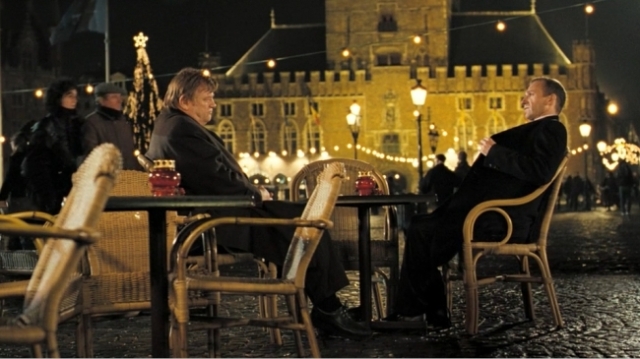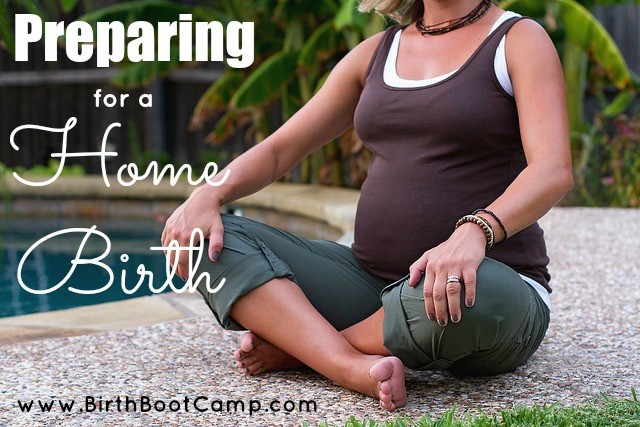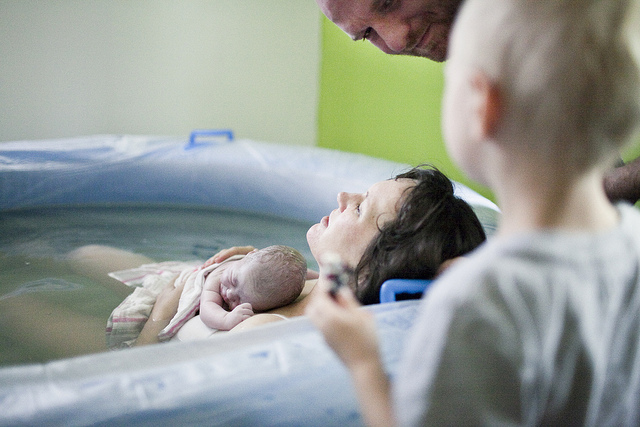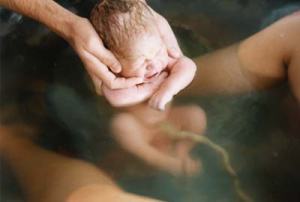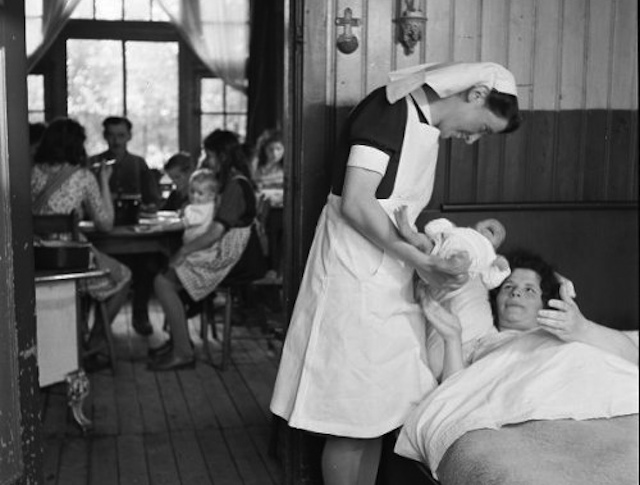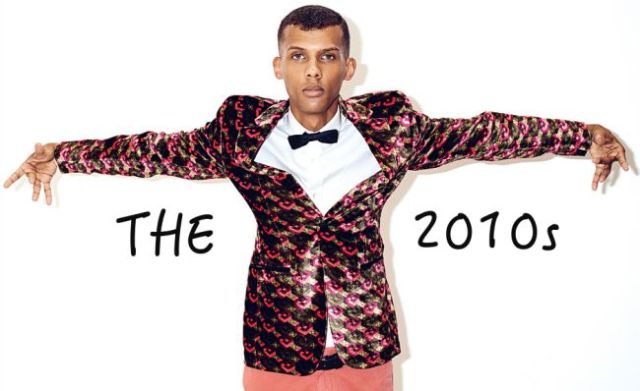Οι γιορτές είναι η τέλεια εποχή να μαζευτούμε δίπλα στο τζάκι, και με φόντο το φωτισμένο χριστουγεννιάτικο δένδρο… να πάρουμε μια γερή δόση Χριστουγεννιάτικων ταινιών! Εάν όμως έχεις βαρεθεί να δεις Μόνος στο σπίτι και The Polar Express ξανά και ξανά, διάβασε αυτή τη λίστα με 12 πιο “εναλλακτικές” επιλογές για να απολαύσεις αυτές τις μέρες … και όχι μόνο!
1) IN BRUGES (Αποστολή στη Μπριζ, 2008)
Δύο Ιρλανδοί εκτελεστές (ο Colin Farrell και ο Brendan Gleeson), λαμβάνουν εντολές να παραμείνουν στη παραμυθένια πόλη Μπριζ (στο Βέλγιο) κατά την διάρκεια των Χριστουγέννων μετά από μια δουλειά που πήγε στραβά. Σε αναμονή για την επόμενη τους αποστολή, εμπλέκονται στα πιο σουρεαλιστικά γεγονότα, και όταν τελικά αποκαλύπτεται η δουλειά, ακολουθεί ένας αγώνας ζωής και θανάτου, ο οποίος προκαλεί ταυτόχρονα μελοδραματικές και ξεκαρδιστικές καταστάσεις … Ευφυέστατη, σκοτεινή, υπαρξιακή και προκλητική ταινία, που πραγματικά αξίσει να δεις οποιαδήποτε εποχή του χρόνου.
2) LE PÈRE NOËL EST UNE ORDURE (Ο Άγιος Βασίλης είναι σκέτη λέρα, 1982)
Αν σου αρέσουν οι γαλλικές κωμωδίες (δες τη λίστα μου εδώ), θα λατρέψεις αυτήν την ταινία. Ο Pierre και η Thérèse, οι οποίοι εργάζονται για μια τηλεφωνική γραμμή ψυχολογικής υποστήριξης την παραμονή των Χριστουγέννων, εμπλέκονται στις πιο απίστευτες και τρελές καταστάσεις που μπορεί να φανταστεί κανείς. Ασεβής και ξεκαρδιστική, με το πάντα “πολιτικά μη-ορθό” γαλλικό χιούμορ. Ένα all time classic στη Γαλλία, ένα must κατά τη διάρκεια των εορτών.
3) THE FAMILY MAN (Ονειρεμένη ζωή, 2000)
Ο Jack Campbell (Nicolas Cage), επιτυχημένο στέλεχος της Wall Street και απόλυτα ευχαριστημένος με την εργένικη του ζωή, ξυπνάει το πρωί των Χριστουγέννων, και ανακαλύπτει πως είναι παντρεμένος με την πρώην του φίλη και έχουν 2 παιδιά! Μέσα στις εβδομάδες που ακολουθούν, θα πάρει μια γεύση για το πως θα ήταν η ζωή του εάν θα είχε παντρευτεί. Γλυκιά και συγκινητική ταινία που μας δείχνει πώς ορισμένες αποφάσεις που παίρνουμε μπορεί να μας αλλάξουν εντελώς, και μας κάνει να σκεφτούμε ποιες είναι οι προτεραιότητές μας στη ζωή…
4) LIFE OF BRIAN (Ένας προφήτης… μα τι προφήτης!, 1979)
Η ιστορία της αρχής των Χριστουγέννων, όπως την φαντάστηκαν οι ασύγκριτοι Monty Python. Ο Brian του Ναζαρέτ γεννιέται σε ένα στάβλο τα Χριστούγεννα, ακριβώς δίπλα στον Ιησού. Ακολουθούμε τις παράλληλες ζωές τους, και πώς, μέσα από τις πιο απίστευτες καταστάσεις, ο Brian γίνεται ο Μεσσίας. Η διάσημη σκηνή με το τραγούδι “Always look on the bright side of life” έχει παραμείνει ως ένα all time classic του σινεμά. Σατιρική, με γρήγορο ρυθμό, έξυπνη και αστεία, μία από αυτές τις ταινίες που κάθε σινεφίλ πρέπει να δει τουλάχιστον μία φορά…
5) KISS KISS BANG BANG (Φιλιά και σφαίρες, 2005)
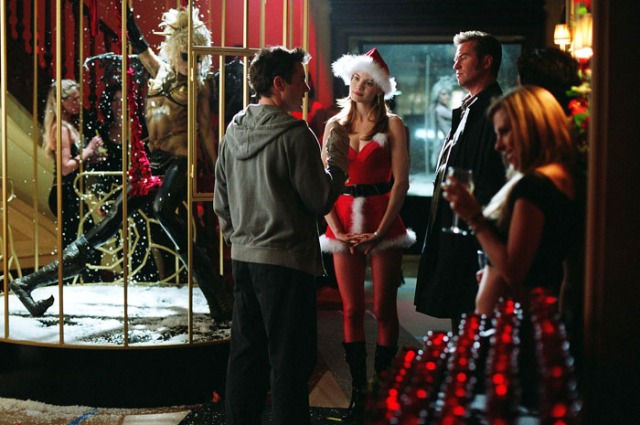
 Τα Χριστούγεννα στο Λος Άντζελες είναι το φόντο για αυτή την πνευματώδης μαύρη κωμωδία, όπου ένας κλέφτης (Robert Downey Jr) που γίνεται ηθοποιός και μετά ντετέκτιβ ενώνει τις δυνάμεις του με ένα ιδιωτικό ντετέκτιβ (Val Kilmer) και μια επίδοξη ηθοποιός (Michelle Monaghan) για να λύσουν το μυστήριο ενός φόνου. Η καλές ερμηνείες, σε συνδυασμό με την έξυπνη ιστορία και τη σκηνοθεσία του Shane Black κάνουν αυτή η ταινία μια πολύ καλή επιλογή για λίγη Χριστουγεννιάτικη διασκέδαση.
Τα Χριστούγεννα στο Λος Άντζελες είναι το φόντο για αυτή την πνευματώδης μαύρη κωμωδία, όπου ένας κλέφτης (Robert Downey Jr) που γίνεται ηθοποιός και μετά ντετέκτιβ ενώνει τις δυνάμεις του με ένα ιδιωτικό ντετέκτιβ (Val Kilmer) και μια επίδοξη ηθοποιός (Michelle Monaghan) για να λύσουν το μυστήριο ενός φόνου. Η καλές ερμηνείες, σε συνδυασμό με την έξυπνη ιστορία και τη σκηνοθεσία του Shane Black κάνουν αυτή η ταινία μια πολύ καλή επιλογή για λίγη Χριστουγεννιάτικη διασκέδαση.
6) RARE EXPORTS: A CHRISTMAS TALE (2010)

 Καλύτερα να προσέξετε … Ο Άγιος Βασίλης έρχεται στην πόλη! Την παραμονή των Χριστουγέννων στη Φινλανδία, πραγματοποιείται μία από τις μεγαλύτερες ανακαλύψεις της ανθρωπότητας: σε μια αρχαιολογική ανασκαφή, ο πραγματικός Άγιος Βασίλης ξαναζωντανεύει! Μόνο που δεν είναι ο καλός άνθρωπος που κάθε παιδί έχει στο μυαλό του… Τρόμος, φαντασία, περιπέτεια και λίγο φινλανδικό μαύρο χιούμορ.
Καλύτερα να προσέξετε … Ο Άγιος Βασίλης έρχεται στην πόλη! Την παραμονή των Χριστουγέννων στη Φινλανδία, πραγματοποιείται μία από τις μεγαλύτερες ανακαλύψεις της ανθρωπότητας: σε μια αρχαιολογική ανασκαφή, ο πραγματικός Άγιος Βασίλης ξαναζωντανεύει! Μόνο που δεν είναι ο καλός άνθρωπος που κάθε παιδί έχει στο μυαλό του… Τρόμος, φαντασία, περιπέτεια και λίγο φινλανδικό μαύρο χιούμορ.
7) LE TOUT NOUVEAU TESTAMENT (Η ολοκαίνουργια…Καινή Διαθήκη, 2015)
Τελικά αποδεικνύεται ότι ο Θεός υπάρχει, και ζει στο Βέλγιο! Το πρόβλημα είναι πως έχει βαρεθεί την ζωή του, και η μοναδική του χαρά είναι να καταστρέψει τις ζωές των ανθρώπων. Αλλά η κόρη του Εα αποφασίζει να πάρει την κατάσταση στα χέρια της για να σώσει τον κόσμο από τον τρελό της μπαμπά. Πρωτότυπο σενάριο, καλές ερμηνείες, η ταινία αυτή έλαβε θριαμβευτικές κριτικές και πήρε πολλά βραβεία.
8) SERENDIPITY (‘Ερωτας μετ’Εμποδίων, 2001)
Serendipity σημαίνει “τυχερό γεγονός” ή “ευχάριστη έκπληξη”, και αυτό ακριβός είναι το θέμα της ταινίας… Ο Jonathan συναντά την Sara κατά τύχη τα Χριστούγεννα στη Νέα Υόρκη, και επειδή νιώθουν μια αμοιβαία έλξη, πάνε μαζί στο εστιατόριο Serendipity 3. Εκεί, η Sara εκφράζει την άποψή της ότι η μοίρα καθορίζει τις περισσότερες αποφάσεις στη ζωή. Έτσι, γράφει το τηλέφωνο της σε ένα βιβλίο που θα πουλήσει την επόμενη μέρα, και ο Jonathan σε ένα χαρτονόμισμα, δηλώνοντας πως, αν η μοίρα τους θέλει μαζί, θα ξανασυναντηθούν. Είναι μια ανάλαφρη αλλά απολαυστική ρομαντική κωμωδία που θα σε κάνει να σκεφτείς για τη μοίρα, τις αδελφές ψυχές και την αληθινή αγάπη …
9) BRAZIL (1985)
Και άλλο must-see για τους σινεφίλ από τον Terry Gilliam, πρώην μέλος των Monty Python. Σε αυτήν την δυστοπική ταινία επιστημονικής φαντασίας, ένας δημόσιος υπάλληλος που εργάζεται σε ένα Οργουελιανό, γραφειοκρατικό κράτος, ψάχνει να βρει μια γυναίκα που εμφανίζεται στα όνειρά του. Αλλά προσπαθώντας να διορθώσει ένα διοικητικό λάθος, γίνεται απρόσμενα εχθρός του κράτους, και τα πράγματα γίνονται ακόμα πιο περίπλοκα όταν βρίσκει κάποια που μοιάζει με την γυναίκα των ονείρων του… Η ταινία είναι οπτικά εντυπωσιακή, εξαιρετικά έξυπνη, προκλητική και απολαυστική.
10) EDWARD SCISSORHANDS, (Ο Ψαλιδοχέρης, 1990)

 Είναι σίγουρο πως αν σκέφτεσαι “αντισυμβατικό σινεμά”, ο σκηνοθέτης Τιμ Μπάρτον έρχεται αμέσως στο μυαλό σου. Η ιστορία του Edward ο Ψαλιδοχέρης, ένας άνθρωπος που έχει ψαλίδια αντί για χέρια, είναι μια από τις πιο όμορφες και συγκινητικές Χριστουγεννιάτικες ιστορίες στο σινεμά. Διάβασε περισσότερα για αυτή την ταινία εδώ.
Είναι σίγουρο πως αν σκέφτεσαι “αντισυμβατικό σινεμά”, ο σκηνοθέτης Τιμ Μπάρτον έρχεται αμέσως στο μυαλό σου. Η ιστορία του Edward ο Ψαλιδοχέρης, ένας άνθρωπος που έχει ψαλίδια αντί για χέρια, είναι μια από τις πιο όμορφες και συγκινητικές Χριστουγεννιάτικες ιστορίες στο σινεμά. Διάβασε περισσότερα για αυτή την ταινία εδώ.
11) ANNIE HALL (Νευρικός εραστής, 1977)

 Αν σου αρέσει ο Γούντι Άλεν, τα Χριστούγεννα θα είναι η τέλεια δικαιολογία για να (ξανα) δεις αυτή την καταπληκτική ταινία, η οποία είναι για τους περισσότερους φαν -και εγώ μαζί τους- μία από τις καλύτερες του ταινίες, η οποία συχνά συγκαταλέγεται ανάμεσα στις καλύτερες κινηματογραφικές κωμωδίες όλων των εποχών. Στην ταινία αυτή, ο Νεοϋορκέζος, νευρωτικός κωμικός Alvy ερωτεύεται την επίδοξη (και λίγο χαζή) τραγουδίστρια Annie Hall. Τα στερεότυπα των φύλων, η ψυχανάλυση και η εβραϊκή ταυτότητα είναι τα θέματα που ο Γούντι αναλύει με τρόπο μοναδικό, ξεκαρδιστικό αλλά και μερικές φορές δραματικό.
Αν σου αρέσει ο Γούντι Άλεν, τα Χριστούγεννα θα είναι η τέλεια δικαιολογία για να (ξανα) δεις αυτή την καταπληκτική ταινία, η οποία είναι για τους περισσότερους φαν -και εγώ μαζί τους- μία από τις καλύτερες του ταινίες, η οποία συχνά συγκαταλέγεται ανάμεσα στις καλύτερες κινηματογραφικές κωμωδίες όλων των εποχών. Στην ταινία αυτή, ο Νεοϋορκέζος, νευρωτικός κωμικός Alvy ερωτεύεται την επίδοξη (και λίγο χαζή) τραγουδίστρια Annie Hall. Τα στερεότυπα των φύλων, η ψυχανάλυση και η εβραϊκή ταυτότητα είναι τα θέματα που ο Γούντι αναλύει με τρόπο μοναδικό, ξεκαρδιστικό αλλά και μερικές φορές δραματικό.
12) LAST HOLIDAY (2006)

 Η Γεωργία, μια ντροπαλή ιδιωτικός υπάλληλος, μαθαίνει πως είναι πολύ άρρωστη και της μένουν μόνο λίγες εβδομάδες να ζήσει. Αποφασίζει λοιπόν να ξοδέψει όλα τα λεφτά που έχει στις διακοπές των ονείρων της στο πολυτελές ξενοδοχείο Grandhotel Pupp στο Κάρλοβι Βάρι της Τσεχίας. Αφού δεν έχει τίποτα να χάσει, ζει τη ζωή της στο έπακρο, το οποίο έχει απρόβλεπτες συνέπειες για την ίδια και τους ανθρώπους που συναντά… Feel-good και ευχάριστη, με ένα απλό αλλά σημαντικό ηθικό δίδαγμα: ας απολαύσουμε τη ζωή μας, γιατί ποτέ δεν ξέρεις τι σε περιμένει στη γωνία! Η υπέροχη Queen Latifah και ο πάντα ανατρεπτικός Gerard Depardieu προσθέτουν τη δικιά τους γοητεία σε αυτή την χαριτωμένη ρομαντική κωμωδία.
Η Γεωργία, μια ντροπαλή ιδιωτικός υπάλληλος, μαθαίνει πως είναι πολύ άρρωστη και της μένουν μόνο λίγες εβδομάδες να ζήσει. Αποφασίζει λοιπόν να ξοδέψει όλα τα λεφτά που έχει στις διακοπές των ονείρων της στο πολυτελές ξενοδοχείο Grandhotel Pupp στο Κάρλοβι Βάρι της Τσεχίας. Αφού δεν έχει τίποτα να χάσει, ζει τη ζωή της στο έπακρο, το οποίο έχει απρόβλεπτες συνέπειες για την ίδια και τους ανθρώπους που συναντά… Feel-good και ευχάριστη, με ένα απλό αλλά σημαντικό ηθικό δίδαγμα: ας απολαύσουμε τη ζωή μας, γιατί ποτέ δεν ξέρεις τι σε περιμένει στη γωνία! Η υπέροχη Queen Latifah και ο πάντα ανατρεπτικός Gerard Depardieu προσθέτουν τη δικιά τους γοητεία σε αυτή την χαριτωμένη ρομαντική κωμωδία.
